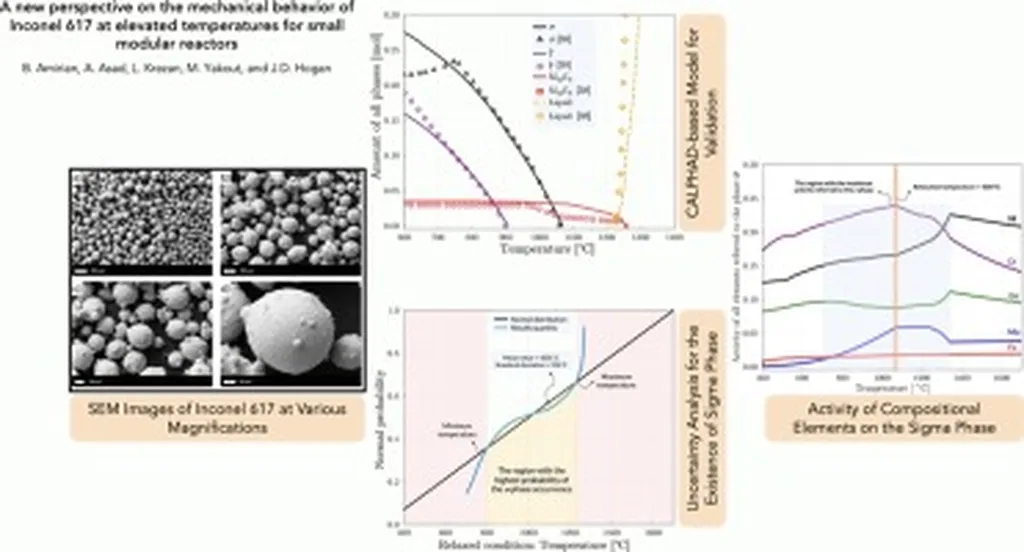In the relentless pursuit of materials that can withstand the harsh conditions of modern energy production, researchers have made a significant stride with the IN617 heat-resistant alloy. A team of scientists, led by Liu Qicong from the Institute for Special Steels at the Central Iron and Steel Research Institute (CISRI) in Beijing, has uncovered how tweaking the carbon (C) and molybdenum (Mo) content in this alloy can dramatically enhance its microstructure and mechanical properties. Their findings, published in the journal *Teshugang* (which translates to *Iron and Steel*), could have profound implications for the energy sector, particularly in high-temperature applications like gas turbines and nuclear reactors.
The team set out to optimize the composition of IN617 for more demanding service conditions. By systematically varying the C and Mo content, they explored how these elements influence the alloy’s microstructure and short-term mechanical properties. “We found that increasing the C and Mo content refines the secondary dendrite spacing, which is crucial for the alloy’s strength and toughness,” explained Liu Qicong. For instance, a modest increase in C from 0.054% to 0.066% reduced the secondary dendrite spacing from 13.6 μm to 8.3 μm. Similarly, boosting Mo from 8.53% to 9.51% achieved a comparable refinement.
The researchers also observed a significant increase in the volume fraction of primary precipitates with higher C and Mo content. For every 0.01% increase in C, the volume fraction of carbides rose by about 1.0%, while a 1.0% increase in Mo led to a 0.45% increase in carbides. These precipitates play a pivotal role in the alloy’s strength and stability at high temperatures.
The precipitation mechanism primarily involves a three-phase symbiosis of Ti(C,N)-M6C-M23C6 and a two-phase symbiosis of M6C-M23C6. Interestingly, the team found that changes in C and Mo content had a limited effect on this mechanism. However, the increased carbide content and reduced dendritic segregation led to markedly improved mechanical properties. For example, the alloy with high C and high Mo content exhibited a tensile strength of 792.0 MPa and a yield strength of 340.0 MPa at room temperature. At 800°C, these values were 422.0 MPa and 210.0 MPa, respectively—higher than those of alloys with lower C and Mo content.
While the high C and high Mo alloy showed superior strength, it did come with a slight trade-off in toughness, with impact absorbed energy about 100.0 J lower than that of the low C alloy. Nevertheless, the overall improvement in mechanical properties at elevated temperatures makes this alloy a promising candidate for high-temperature applications in the energy sector.
The implications of this research are far-reaching. As the energy sector continues to push the boundaries of efficiency and performance, the demand for materials that can withstand extreme conditions grows ever more critical. The insights gained from this study could pave the way for the development of next-generation heat-resistant alloys tailored for specific applications, from advanced gas turbines to cutting-edge nuclear reactors. By optimizing the C and Mo content, engineers can fine-tune the alloy’s properties to meet the exacting demands of these environments, ensuring reliability and longevity.
As the world transitions towards cleaner and more efficient energy solutions, the role of advanced materials like IN617 cannot be overstated. This research not only advances our understanding of alloy behavior but also opens new avenues for innovation in the field. “Our findings provide a solid foundation for further exploration and optimization of heat-resistant alloys,” said Liu Qicong. With continued research and development, the energy sector can look forward to materials that are not only stronger and more durable but also more adaptable to the evolving needs of a sustainable future.

